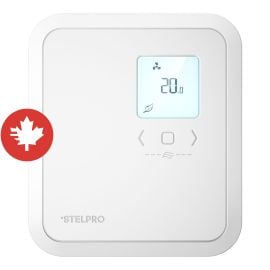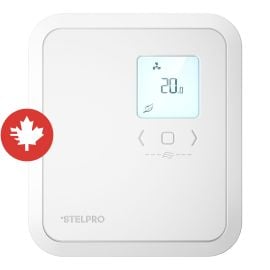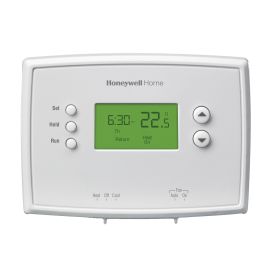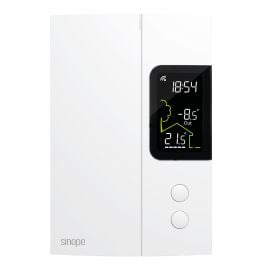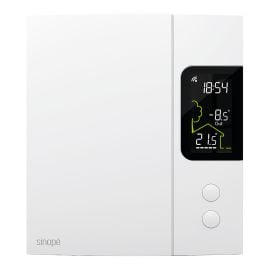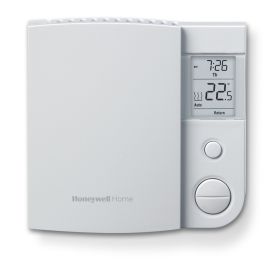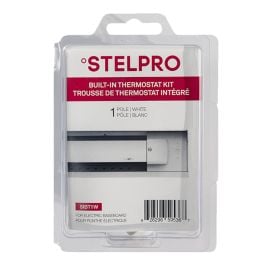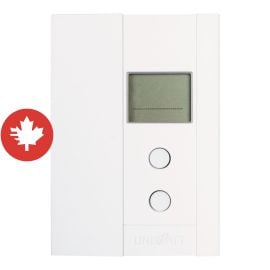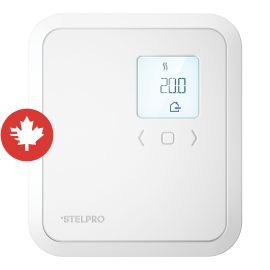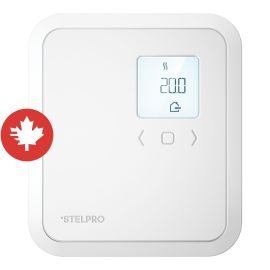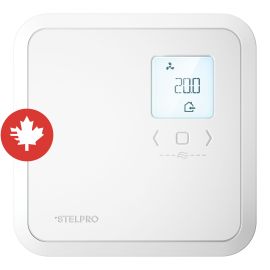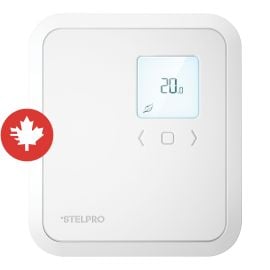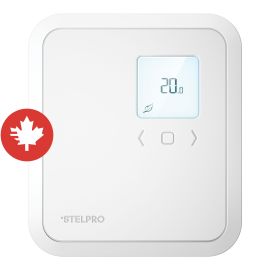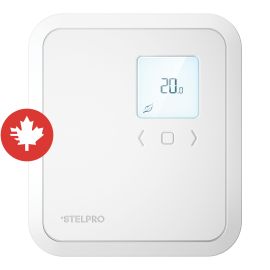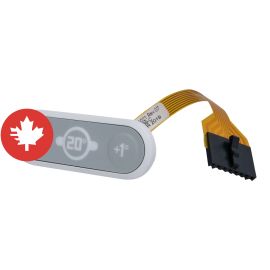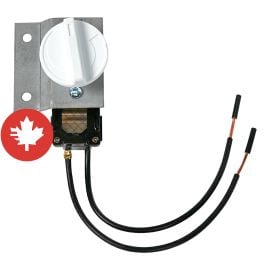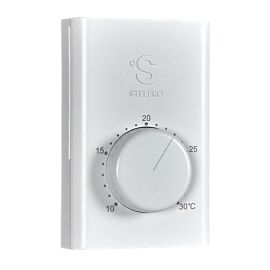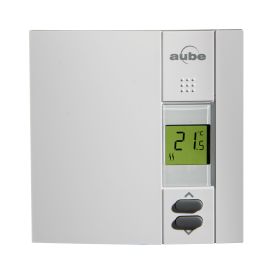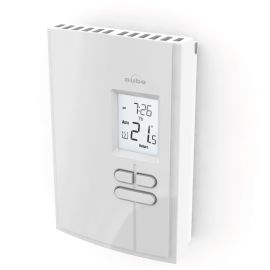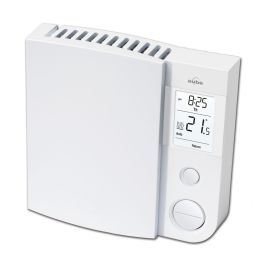The unit on the wall that controls your heat sources, the thermostat ensures the temperature is just right for you. Although there are a range of models out there, not all offer the same level of precision and potential for energy savings. Here’s how to decide which one is right for you.
Mechanical thermostat
The mechanical thermostat, also known as the bimetallic or “dial” thermostat, has long graced the walls of our homes.
It consists of a control dial and a housing that holds two strips of metal (fixed and mobile) that react when the temperature drops. When their tips make contact, the heating system is activated. Once the desired temperature is reached, the metal strips separate and the system switches off.
Mechanical thermostats are the least expensive on the market, but they are also the least accurate because they are much less sensitive to changes in temperature than electronic thermostats. They also take longer to switch on or off, resulting in variances of 2 to 5 ˚C between the ambient temperature obtained and the desired temperature, forcing you to adjust it up or down to reach your comfort zone.
However, this type of thermostat can be useful if your heating system is supplied by an unstable power source. In this case, it will prevent the system from overheating.
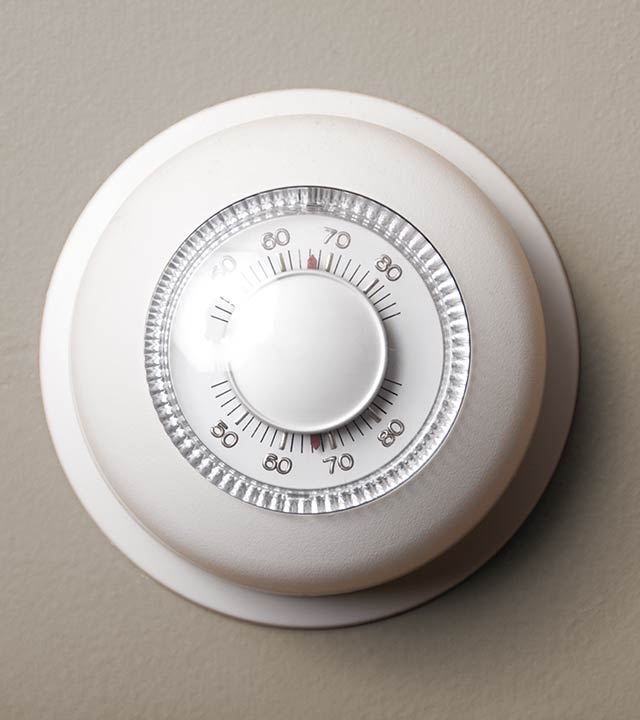
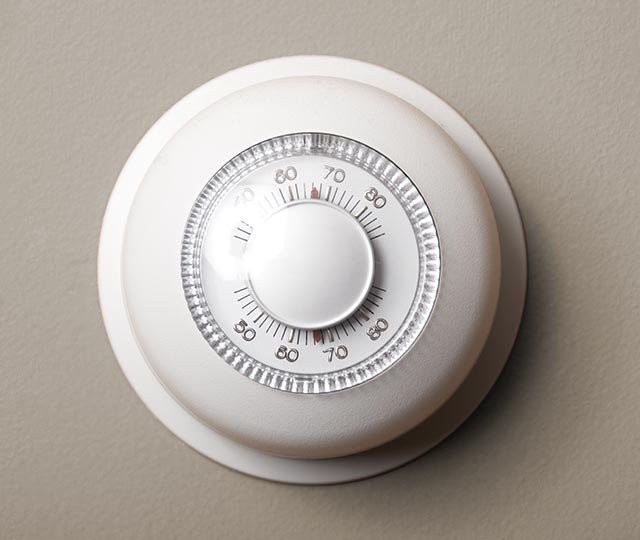
Electronic thermostat
If your home is heated using electricity, heating will make up about 54% of your electricity bill. Since an electronic thermostat is more precise than a mechanical model, it can help you save up to 10% on your annual heating costs, while improving your comfort by providing a much more stable and precise temperature, with a maximum variance of 0.5 oC. There are two types of electronic thermostats: non-programmable and programmable.
Non-programmable electronic thermostats use a pulse-based controller and take a temperature reading every 15 seconds, providing a stable and comfortable ambient temperature. If you have a heat pump, the thermostat can be installed inside or outside.
Programmable electronic thermostats allow you to set the temperature in each room or the entire house with a timer set on a predetermined schedule. This type of thermostat further reduces heating costs (up to 5%) if the ambient temperature is lowered by 3 °C for eight hours, e.g. during the night.
Some models allow you to set one temperature for the week (Monday to Friday) and another for the weekend.
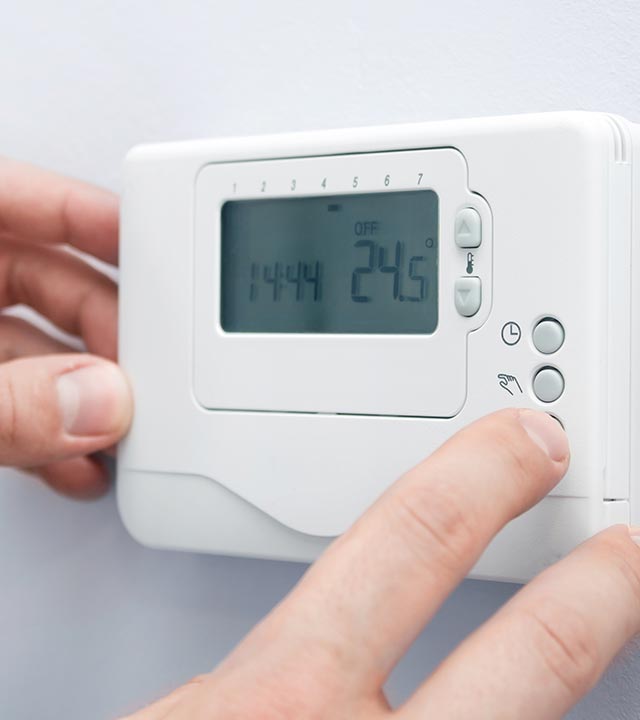
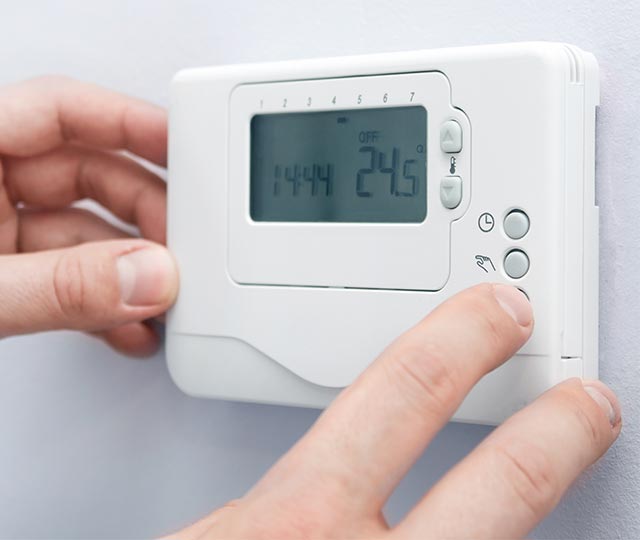
Smart thermostats
While most smart thermostats are designed for forced-air central heating systems and heat pumps, some recent models have been developed specifically for electric baseboard heaters and convectors.
The smart thermostat controls the heating system, air conditioner, and humidifier and changes the heating and air conditioning levels as the weather changes. You can change the ambient temperature of your home remotely through connected devices such as a computer, smartphone or tablet. It is even possible to automatically adjust the temperature using your phone’s geolocation, so that the temperature will be just right when you arrive home.
Of course, a device such as the Lyric Wi-Fi T5 Thermostat helps to significantly reduce your energy consumption.
However, you can expect to pay nearly four times the price of an electronic model and the complexity of its installation will require the help of a heating technician.
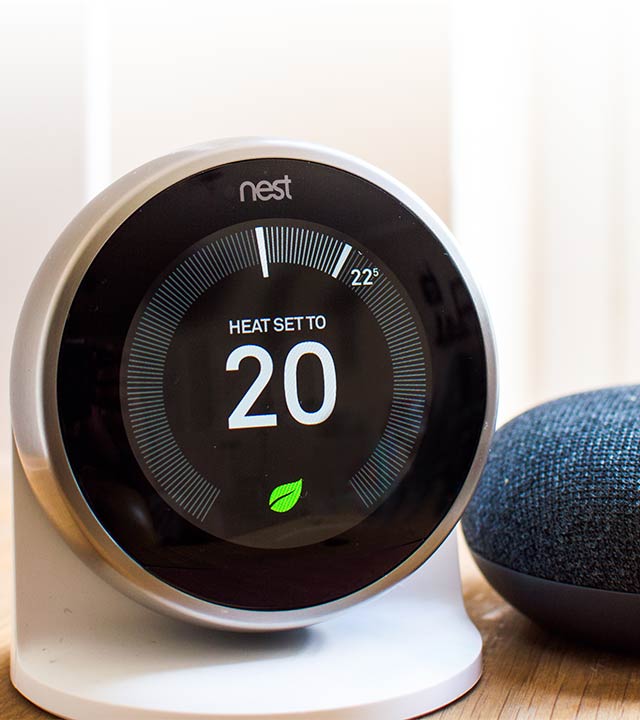
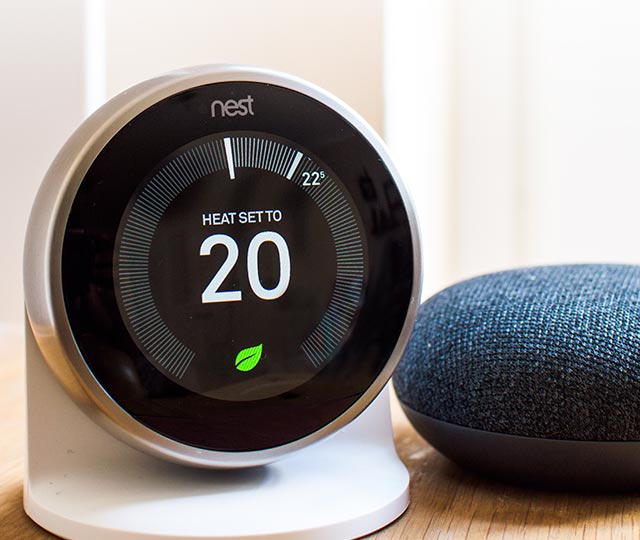
Determine the correct wattage
If you have electric baseboard heaters, it’s important to choose thermostats with the proper wattage and make sure you never let them reach their maximum to avoid the risk of fire. For example, if you have two 1,000-watt baseboard heaters in a room, you will need a thermostat that can accommodate more than 2,000 watts. It is best to choose a thermostat with about 80% better performance, which means a thermostat that can handle approximately 3,600 watts.
To determine the wattage required for a baseboard heater, measure the heating unit or bring the old thermostat in store to receive the proper advice.
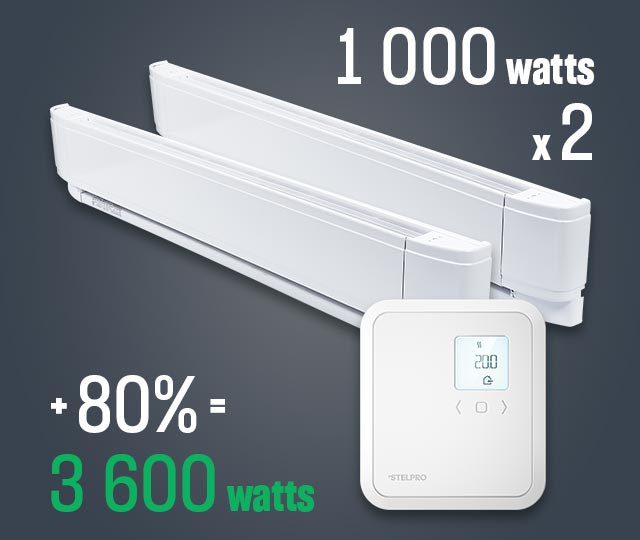

Some products you might like
Need more advice or have special needs? Feel free to contact your local BMR dealer or visit our selection of products directly on our website.
